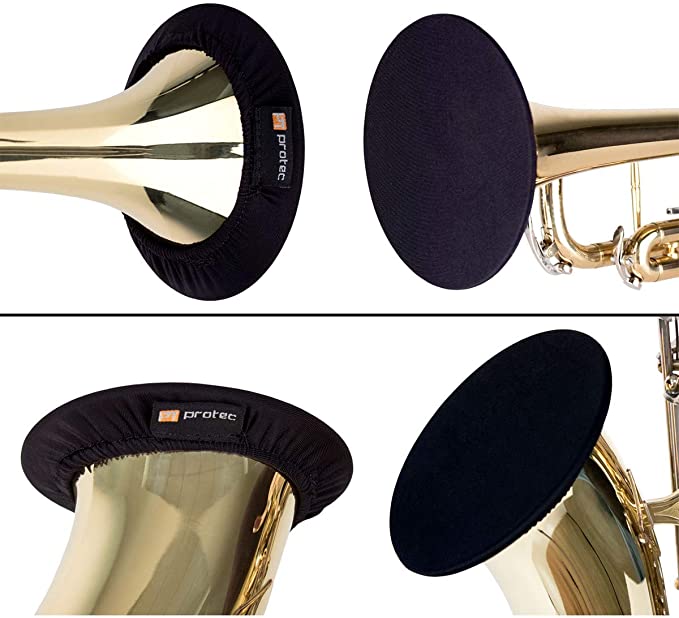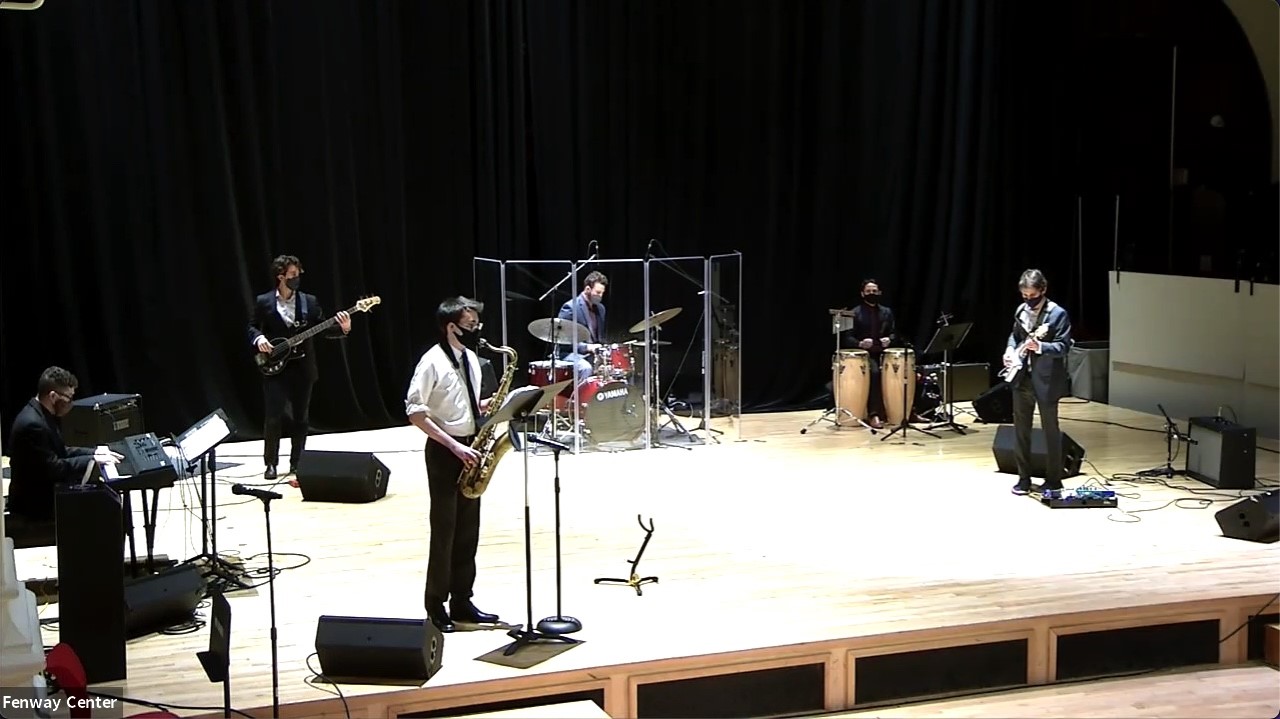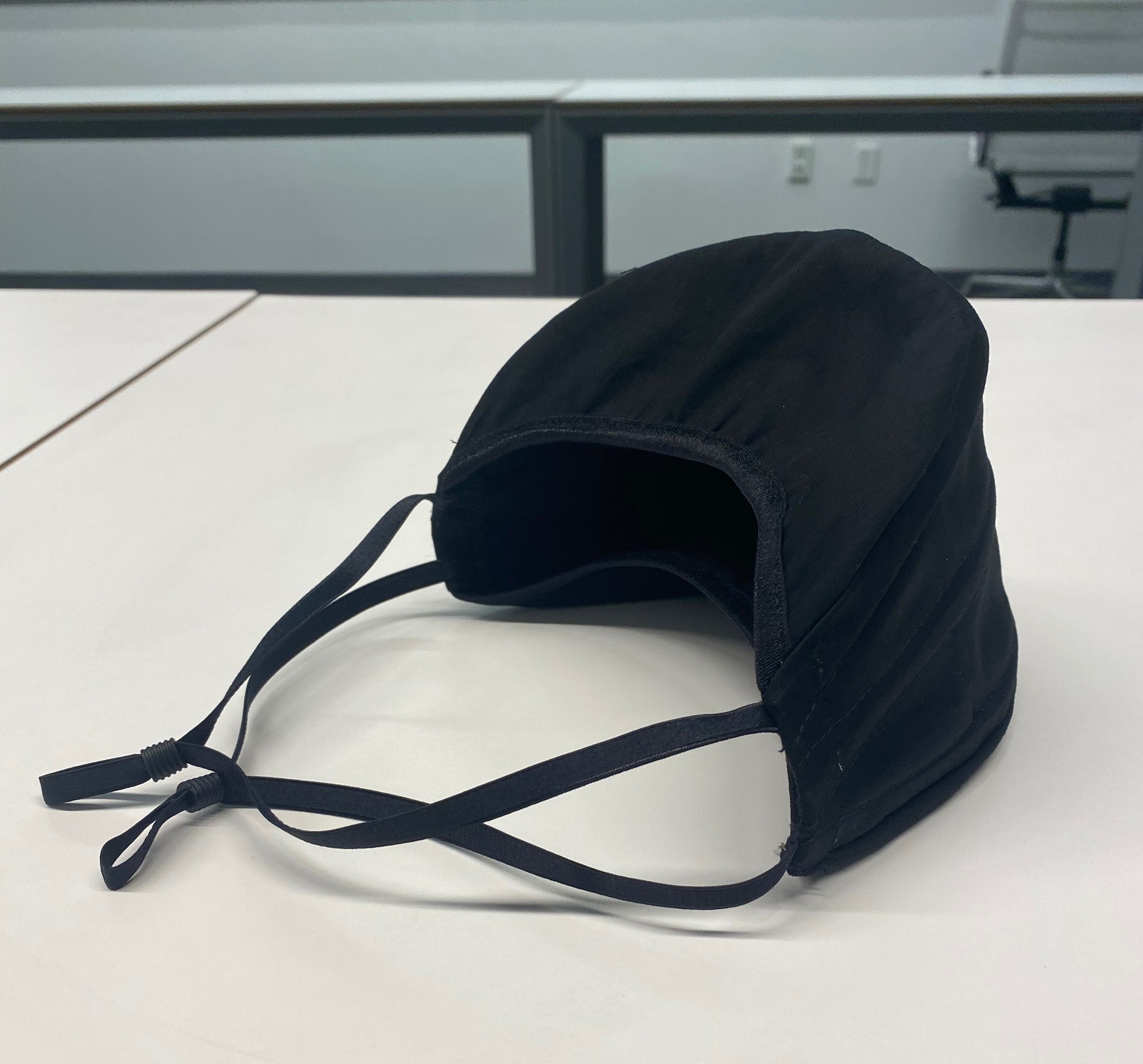
Ensemble performances and practice sessions, held both in groups and individually, are central to CAMD’s Department of Music. While the Fall semester certainly looked different than past years in these areas, through innovative safety measures and flexibility among students and faculty, many rehearsals, practice sessions and other performance activities were able to continue.
The process getting to this point required collaboration, determination, and of course, compromise and sacrifice, but the end result – being able to sing, play, and practice together safely – was well worth it.
One thing I missed most over quarantine was singing with others…
“Choir is a great way to connect with people and I was so excited when I found out we would be able to meet in person this semester,” explained Carly Monson, an undergraduate student studying Music and Psychology. “Northeastern University Choral Society (NUCS) was the only organization I am involved in that had any in-person meetings/events and it was so nice to have somewhere to go and an opportunity to socialize at a distance. Being in small groups was actually a great way to get to know people in choir better which was an unexpected pro to being in this new format.”
“NUCS has always been a highlight of my campus experience,” added Nicole Aziz, an undergraduate student Health Science and Psychology.
So when I knew we were able to rehearse in person, no matter the protocols, I was overjoyed…
“With the singing masks and smaller, more spaced out rehearsal groups, I felt that rehearsals were very safe, while still providing me with a wonderful music experience.”
In building a safe and productive environment for Northeastern’s Department of Music students, one of the first steps was collecting and reviewing the existing research and studies on transmission risks for musicians in relevant group settings. The International Coalition Performing Arts Aerosol Study – a collaboration between the College Band Directors National Association (CBDNA), the National Federation of State High School Associations (NFHS), and researchers at the University of Colorado and the University of Maryland – tracked aerosol spread to provide knowledge that would assist in the safer return to performing arts activities. This study was followed by The Second Round of Performing Arts Aerosol Study Produces Encouraging Preliminary Results, which was published in August and provided important up-to-date information and guidelines related to masks, distance, time, air flow, and hygiene.

“Key takeaways from these studies, and other resources we explored, showed that we could still meet physically, with the appropriate safety measures in place,” said Professor Daniel Godfrey, Chair of the Department of Music. “Examples of these measures include wearing various specialized performance masks and using flute socks and bell covers on wind instruments, all of which reduced the range of aerosol particle emissions.”
With this knowledge as a foundation, the conversation quickly became how to implement these measures effectively on Northeastern’s campus – in key spaces such as The Fenway Center and the practice rooms in Ryder Hall.
In collaboration with partners on campus in the areas of Education & Research Safety, Facilities Operations, Sustainability & Urban Planning, Event Management, as well as CAMD’s Media Studios Organization (MSO), a safe, effective, and implementable plan was developed. Every step of the way, CAMD’s Dean’s Office and Department of Music referenced university standards for COVID-19 safety measures.
A map of The Fenway Center was produced, which examined, through the representation of red dots, the largest number of permitted students in the space. Important aspects, such as the length and width of the room and the angles and positioning of students, as well as the positioning of the conductor (ultimately within a six-foot high booth made of plexiglass) were all taken into close consideration.

The ensembles, including the Northeastern University Choral Society and the Northeastern University Jazz Choir, Jazz Ensemble, Orchestra, and Wind Ensemble are all broken into smaller groups, so that students are able to space themselves out as much as possible. To minimize the moving of equipment, all of the large instruments are set up in The Fenway Center in a way they can be easily pushed forward and back as needed.
Department of Music faculty members Allen Feinstein, Director of Bands and Teaching Professor, and Katherine Chan, Director of Choral Arts and Assistant Teaching Professor, were central in identifying these solutions and making them work for their groups. In addition to the specialty masks, flute socks, and bell covers, some of the more specific safety measures include an agreement among singers to stay within the mezzo forte (moderately-loud) range, as well as regular thirty-minute breaks to air out the space have been worked into the space’s schedule.

“When things started falling apart in March, I expected to have to deal with losing many things I had previously taken for granted. For me, losing in-person music making was perhaps the biggest loss of all,” explained Matt Fishman, an undergraduate student studying Mathematics, who is a member and President of the Northeastern University Wind Ensemble. “After extensive planning with Professor Allen Feinstein and the NU Wind Ensemble’s Student Council, that first rehearsal in mid-September was an exhilarating experience. Though our rehearsal times were shorter and we ensemble groups had to have limited participants, this allowed the group to explore different repertoire and ensembles that would not normally be possible in a regular semester – including an ensemble that dedicated their semester practicing and performing Igor Stravinsky’s Octet for Wind Instruments, with its vibrant instrumentation that spans the entire spectrum of wind instruments.”

“I always felt super safe with our special singers’ masks and being well over six feet apart from one another and I’m so glad we were able to have choir in this new setting,” added Carly, student.
“Singing with people in the same room at the same time is such a unique, powerful experience, and I owe many thanks to Dr. Chan, the Music Department, and the university for giving me that opportunity without risking my health,” concluded Nicole, student.
These new arrangements, while necessary and important, have taken some getting used to – not just at Northeastern, but across the industry.
Musicians are not used to standing so far away from each other as they play their instruments or sing, so it can be difficult to hear each other clearly. To combat this, some groups at Northeastern, like the rock and jazz ensembles, have been able to amplify their instruments through strategically placed speakers. Being spread apart, and wearing masks, also makes it harder to read each other’s visual cues, an important yet subtle component of group performance.
Many of the challenges are aspects of performing arts activities someone may not even think of at first. One unexpected discovery for string players, for example, who are used to sharing a music stand with someone and alternating turning the pages of music, was that they would be spending more time turning the pages themselves – and would need extra copies of the music. Despite the inevitable challenges, however, the benefits and positive outcomes have been immense.
“Our ensemble directors have been incredibly creative with engaging their students digitally this semester, especially in the first month before the performance details were finalized. There has been an increased emphasis on analyzing music, exploring its history, and putting it all in a larger context. Combined with these efforts, now having the ability to return to our performance activities safely has been encouraging and extremely valuable,” Professor Godfrey continued. “Our students feel so fortunate to be able to do anything together during this unprecedented time; being able to perform and practice safely in a group setting has provided a real sense of relief.”
For practicing, the Ryder Hall practice rooms as well as a large, open classroom are available for students to book ahead of time and use individually. Similar to The Fenway Center, these spaces are aired out for thirty minutes between each use – and they are closely monitored by a cohort of student employees. After each reservation, the doors of the practice rooms are propped open by doorstops and indicated by traffic cones that they are between sessions.
“So far, we’ve been able to accommodate student demand in these spaces,” said Arthur Rishi, Concert Coordinator in the Department of Music. “We are all doing and learning new things this semester, and innovating in ways we did not expect…
The new systems in place are working well and it has been a productive and rewarding Fall.
As the semester comes to a close, the students will be showcasing their performances in video format.
“Ultimately, I had a very satisfying fall semester playing challenging music in even more challenging times, and I commend every member of the NU Wind Ensemble for being brave enough to make art during a pandemic,” concluded Matt, student. “For me, Thursdays and Sundays gave me something to look forward to during the week, in stark contrast the monotony of the summer months.”
Next semester will look the same or similar, following current city and state safety guidelines.

